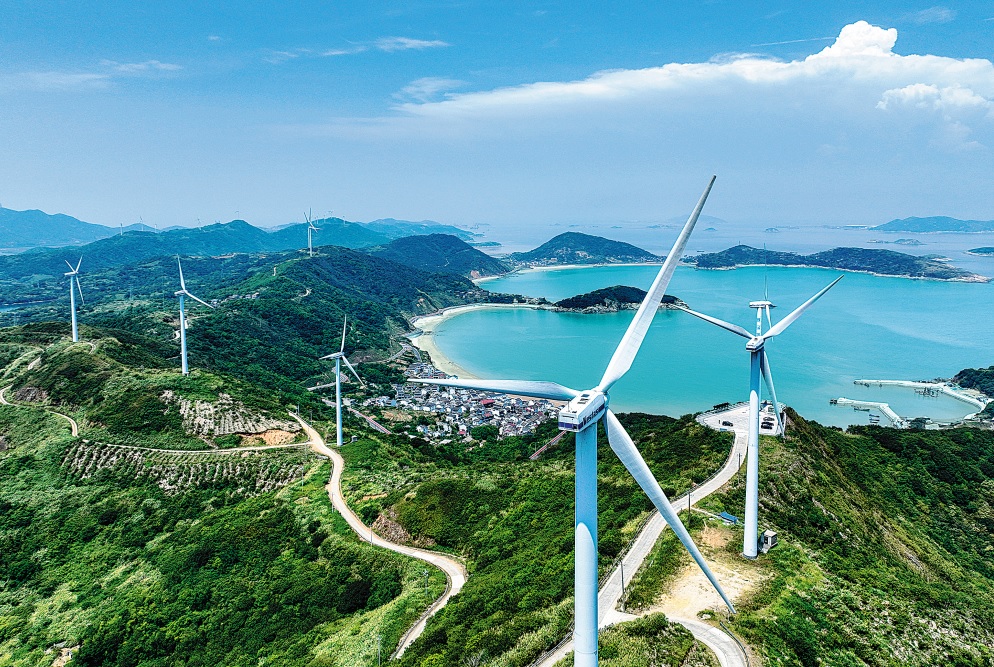Zhejiang pioneers path of high-quality development

A wind farm generates power for grids in Zhoushan, Zhejiang province. [Photo by YAO FENG/FOR CHINA DAILY]
Zhejiang province will step up its efforts in advancing scientific innovation to foster new advantages and accelerate the development of new quality productive forces.
Wang Hao, deputy Party secretary and governor of Zhejiang, introduced the province's achievements at a news conference held by the State Council Information Office in Beijing on March 27.
Wang emphasized that prioritizing high-quality development remains paramount for Zhejiang. The province is expediting the construction of a distinctive modern industrial system tailored to its unique characteristics, propelling the economy towards qualitative enhancement and rational growth in quantity.
In 2023, Zhejiang achieved a GDP of 8.26 trillion yuan ($1.14 trillion), representing a growth rate of 6 percent year-on-year. Despite occupying only 1.1 percent of China's land area and hosting 4.7 percent of its population, Zhejiang contributed 6.5 percent to the national GDP.
Focusing on fostering a first-class business environment, Zhejiang has implemented 32 policy measures to promote the high-quality development of the private economy. These measures aim to boost market expectations, enhance business confidence, and bolster the province's market entities, which have now reached 10.4 million.
Zhejiang's total import and export volume reached 4.9 trillion yuan in 2023. Of this, exports amounted to 3.57 trillion yuan, capturing a 15 percent share of the national market.
In terms of income distribution, Zhejiang has achieved significant milestones, with urban and rural residents enjoying per capita disposable incomes of 74,997 yuan and 40,311 yuan, respectively.
These figures mark 23 consecutive years and 39 consecutive years of Zhejiang leading all provinces and regions in income levels. Moreover, the urban-rural income gap has narrowed to 1.86, while the gap between regions continues to diminish, with the ratio of per capita disposable income between the highest and lowest income districts reducing to 1.56.


